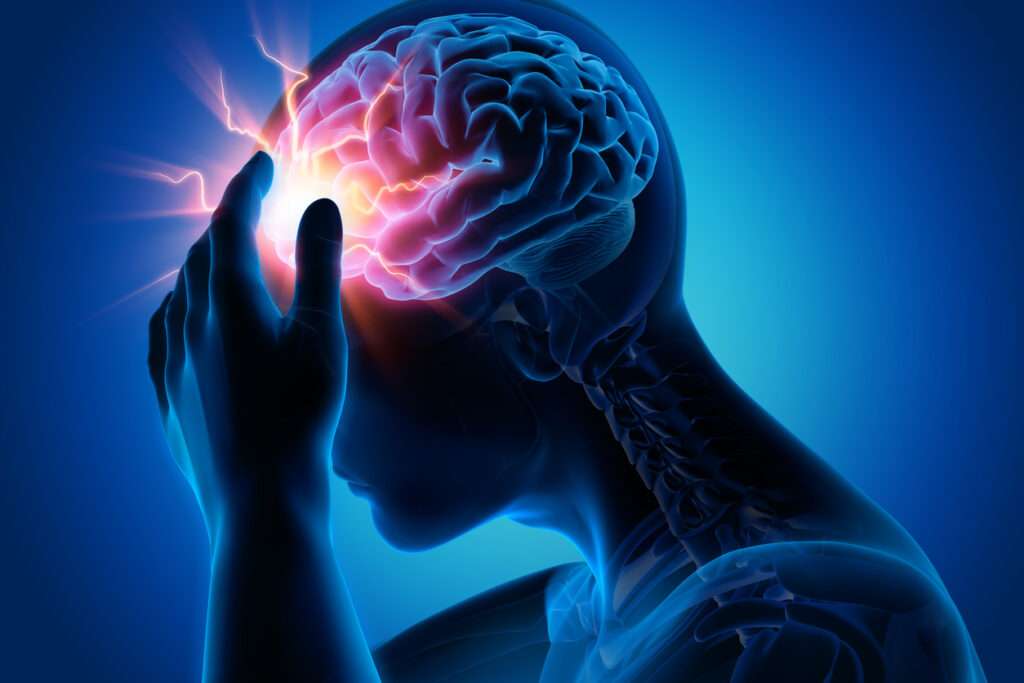Five million people go to the emergency department for a traumatic brain injury (TBI) in the U.S. each year, but more than half of people who suspect they have a concussion never get it checked. A main reason for this is that people aren’t familiar with the common causes and symptoms of concussions, and unfortunately, there are a lot of myths out there.
One especially dangerous myth is that concussions only happen to athletes. Most concussions occur when people fall while doing everyday activities – such as falling while taking a shower or tripping on a toy at home. These types of falls account for nearly half of all concussions in the U.S. And while concussions can happen to anyone, rates of concussions increase significantly in older adults.
Here are five things everyone should know about concussions and falls prevention.

Concussions can happen to anyone, anywhere, anytime.
Concussions can result from almost anything when the brain moves in ways it shouldn’t. While falls are the most common cause, concussions can also be caused by a hit to the head or jolts (think: a car crash or whiplash).
Older adults are at an increased risk for falls and concussions.
Falls are the leading cause of injuries for older Americans and can have serious, life-threatening consequences, including concussions. The latest data from the Centers for Disease Control and Prevention (CDC) show that people age 75+ have the highest numbers and rates of TBI-related hospitalizations and deaths compared to other age groups. Furthermore, older adults have a higher risk for severe outcomes following a concussion, including strokes.
Many people think falls are a normal part of aging, but most falls can be prevented, and everyone has the power to reduce the risk.
Recognize the symptoms of concussions.
Despite the widespread prevalence of concussions, most adults can’t identify the common signs. A common myth about concussions is that all concussions result in a loss of consciousness, but that isn’t the case.
It’s important to recognize the following symptoms if you experience a head injury:
- Changes to sleep patterns
- Changes in emotions
- Clumsiness
- Dizziness or feeling off-balance
- Exhaustion
- Headaches
- Memory Loss
- Mental fog or concentration problems
- Nausea or vomiting
- Numbness or tingling
- Personality changes or irritability
- Sensitivity to noise or light
- Loss of consciousness
- Slowed reaction time
- Vision issues
- Vomiting
You should never just “walk it off.”
When it comes to concussion, it’s never best to “wait and see.” For your best chance at a full recovery, seek professional medical help immediately.
If you hit your head, remember these steps:
- Stop: Slow down, take a breath. Then, take a moment to assess.
- Look for symptoms: Some symptoms like headaches or nausea or vomiting might not show up immediately, and other warning signs like dizziness or feeling off-balance may not appear for hours or even days after an injury.
- Get it checked: It’s important to be cautious. If you have even the slightest suspicion of a concussion, seek medical attention.
Concussion evaluation is evolving and doesn’t always require a CT scan.
Concussions can be evaluated in several ways, most often including a physical evaluation and a series of questions. A physician will look for physical symptoms, such as balance and vision issues, and then ask questions that might help uncover other potential symptoms, such as memory loss and slowed reaction time.
Unfortunately, this process is subjective, as a physician must make a diagnosis decision based on their evaluation of the situation. In patients where symptoms aren’t obvious (think: a patient with memory loss being asked if they’ve forgotten anything), this approach to diagnosis isn’t always effective. CT scans and MRIs are often conducted when a concussion is suspected, but these scans are used to detect brain bleeds and can’t identify other concussion symptoms.[9]
The good news is that major advancements are happening in evaluating mild traumatic brain injury (mTBI). Abbott’s i-STAT TBI cartridge – a simple blood test – received clearance from the U.S. Food and Drug Administration (FDA) as a prescription use only test to help physicians assess patients with suspected mTBI at the patient’s bedside. The test can share lab-quality results in just 15 minutes and is cleared for use in anyone 18 years and older. The test measures the level of two biomarkers associated with brain injury in the blood stream to assist in determining the need for a CT scan of the head within 24 hours of head trauma. Based on the test results and an overall patient evaluation, a physician may be able to quickly rule out the need for a CT scan of the head, allowing patients to be sent home sooner without unnecessary exposure to radiation or delays. Find more information about the test and brain health here.
Remember these five things to ensure you and your loved ones are protecting your heads and, ultimately, your health:
- Concussions can happen to anyone, anywhere, anytime.
- Older adults are at an increased risk for falls and concussions.
- It’s important to recognize the symptoms of concussions.
- You should never just “walk it off.”
- Concussion evaluation is evolving and doesn’t always require a CT scan.
By: Brandpoint (Edited by d-mars.com)








